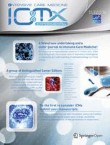Publication of this supplement is funded by AMC Medical Research B.V. and University of Ulm. Peer review was organised by the conference committee. The Supplement Editors declare no competing interests.
Edited by Marcus Schultz, Marcelo Gama de Abreu and Peter Radermacher
